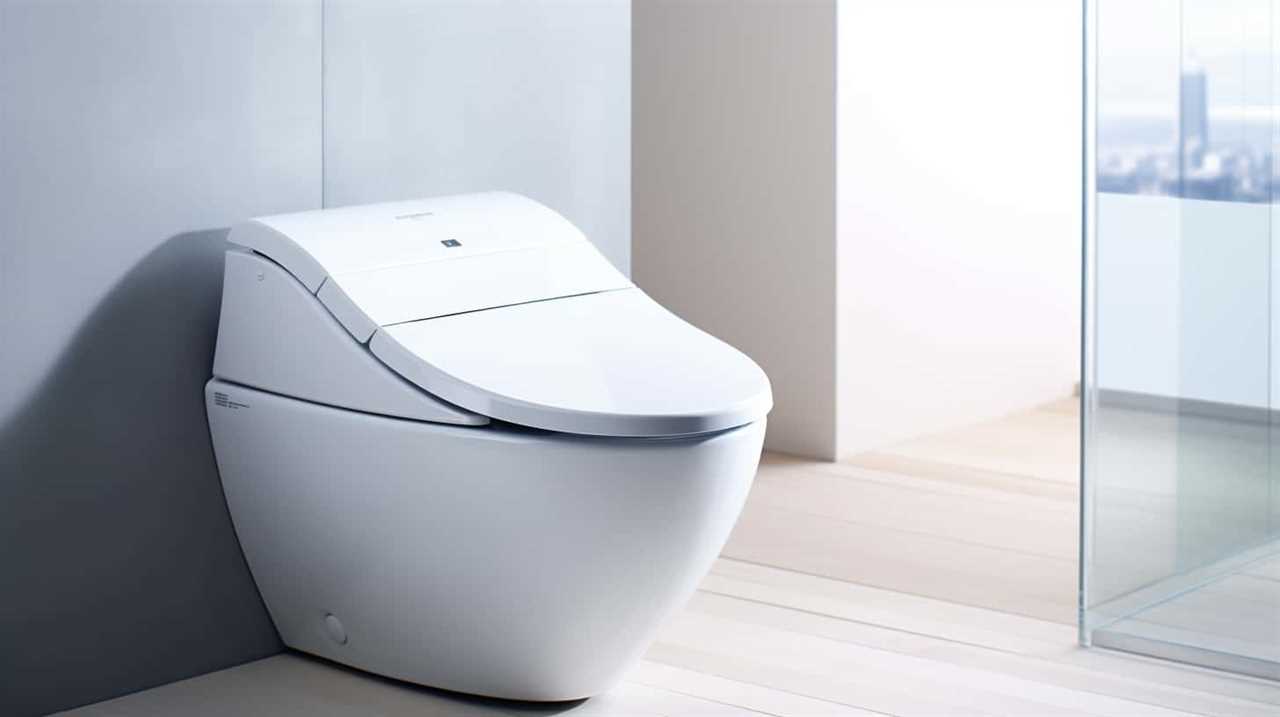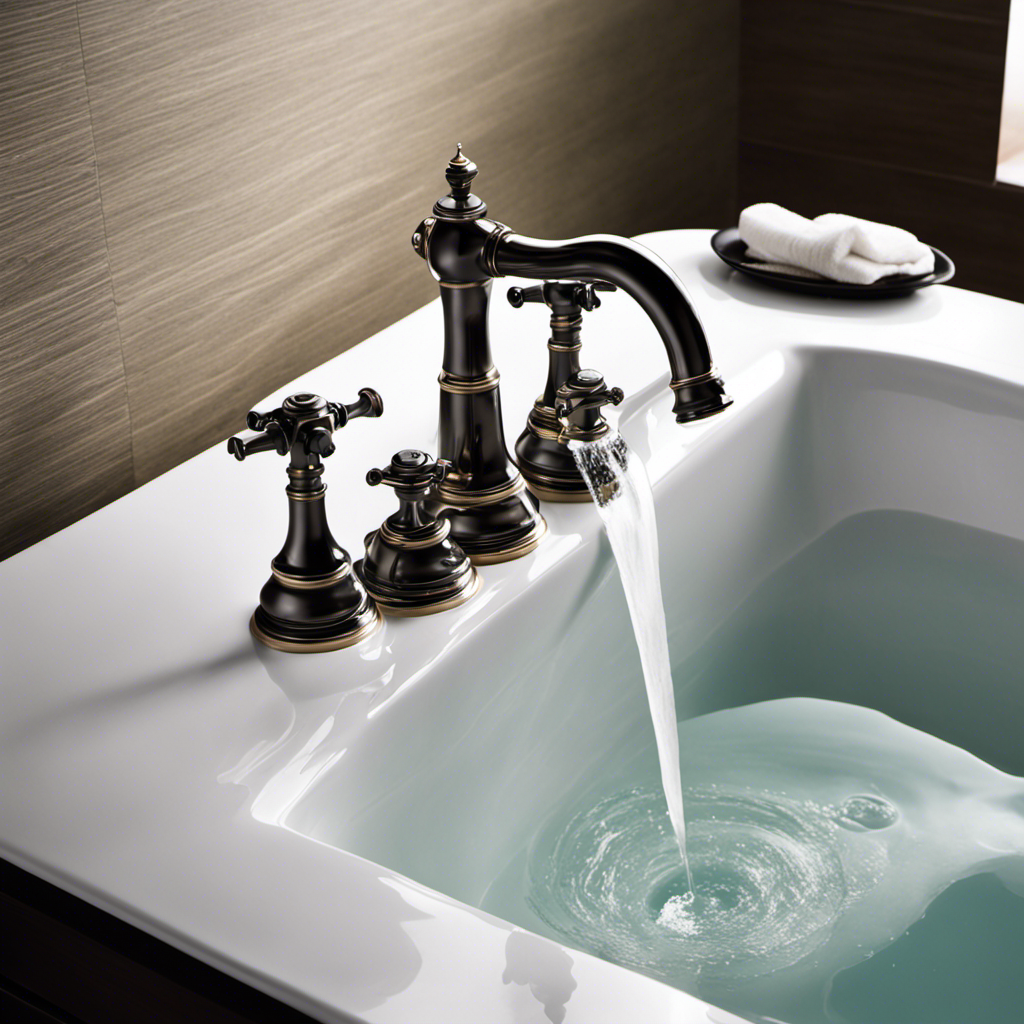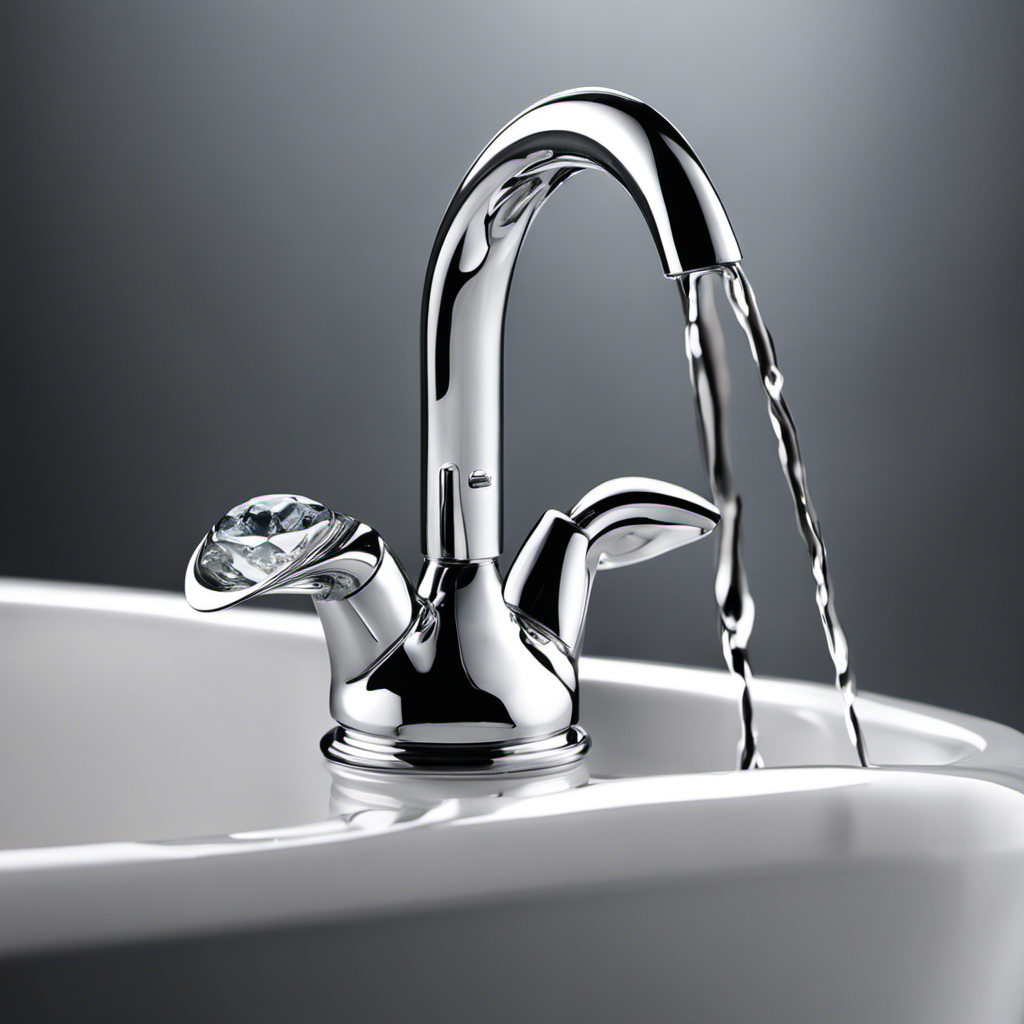We are all aware that whatever is flushed down the toilet vanishes into the enigmatic depths of the plumbing network.
But have you ever wondered what actually happens to it?
Join us on a fascinating journey through the toilet drain as we explore the intricate processes that take place in the sewer system and wastewater treatment plants.
Discover how contaminants and solid waste are removed, and find out the final destination of our flushed items.
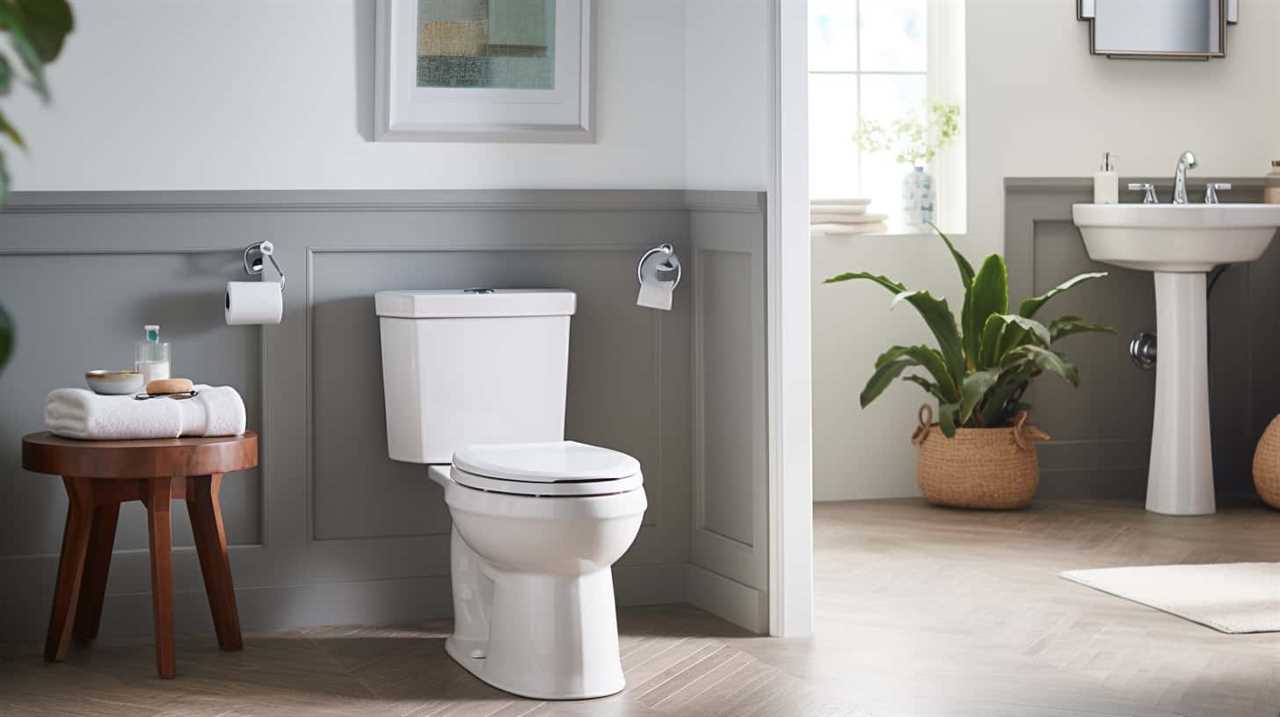
Get ready to master the science behind what happens to stuff that gets flushed down the toilet.
Key Takeaways
- Flushing non-biodegradable items like wipes can cause clogs and blockages in the drain pipes.
- Flushing chemicals and excessive cleaning products can harm the environment and should be avoided.
- Wastewater undergoes treatment processes in the wastewater treatment plant to remove contaminants and impurities before being discharged.
- Proper waste management methods such as recycling should be encouraged to reduce the environmental impact of disposal.
The Journey Through the Toilet Drain
After we flush something down the toilet, it travels through the toilet drain. This journey through the drain is an essential part of the plumbing system and plays a significant role in maintaining proper sanitation. However, it’s important to understand the potential environmental impact and the potential for clogs that can arise from this process.
When an item is flushed, it enters the toilet drain and is carried away by the force of water. The drain pipes are designed to ensure a smooth flow, preventing any blockages or clogs. However, certain objects, such as wipes or feminine hygiene products, can cause issues. These non-biodegradable items can accumulate in the drain pipes, leading to clogs and potential damage to the plumbing system.
Furthermore, the environmental impact of flushing certain items down the toilet shouldn’t be underestimated. Substances like chemicals, medications, or even excessive amounts of cleaning products can end up in our waterways, harming aquatic life and polluting the environment.
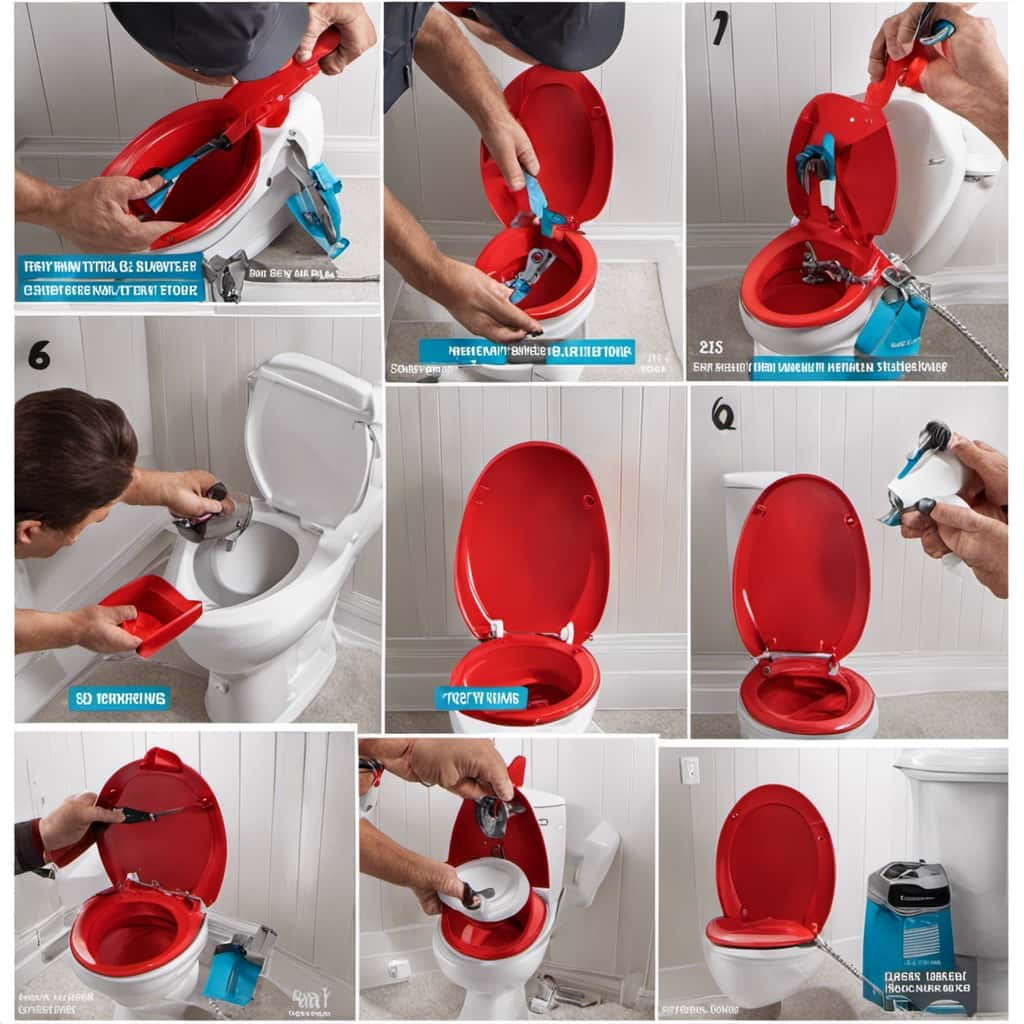
To minimize the risk of clogs and reduce the environmental impact, it’s crucial to only flush toilet paper and human waste. Other items should be disposed of properly in designated waste bins. By doing so, we can ensure the smooth journey of wastewater through the toilet drain while protecting the environment.
From the Toilet to the Sewer System
Once flushed, the wastewater from the toilet travels through the sewer system. This process is crucial for maintaining proper toilet functionality and preventing plumbing issues.
When the toilet is flushed, the wastewater flows through the drainpipe connected to the toilet bowl. From there, it enters the main plumbing system, which consists of a network of underground pipes. These pipes are designed to transport the wastewater to the sewer system.
It’s important to note that regular toilet maintenance is necessary to ensure the smooth flow of wastewater through the sewer system. Neglecting toilet maintenance can lead to clogs, blockages, and other plumbing issues.

Therefore, it’s advisable to conduct regular inspections and address any plumbing concerns promptly to prevent further complications.
Treatment Processes in the Wastewater Treatment Plant
In the wastewater treatment plant, we begin the treatment processes for the flushed wastewater. The primary goal of these processes is to remove contaminants and impurities from the wastewater, making it safe to release back into the environment.
One of the key steps in the treatment process is sludge management. Sludge refers to the solid waste that’s separated from the wastewater during treatment. This sludge undergoes further treatment to remove any remaining contaminants and is then often used for beneficial purposes, such as fertilizer or energy production.
Another crucial aspect of the treatment process is water purification. Various methods, such as sedimentation, filtration, and disinfection, are employed to remove suspended solids, pathogens, and other harmful substances from the wastewater, ensuring that the water meets quality standards before it’s discharged.

Through these treatment processes, we’re able to effectively manage sludge and purify the wastewater, contributing to the protection of public health and the environment.
Removing Contaminants and Solid Waste
To remove contaminants and solid waste from the flushed wastewater, we employ various treatment processes in the wastewater treatment plant. One of the key methods we use is water filtration, which helps to remove suspended particles and harmful substances. During this process, the wastewater passes through different filtration systems, including screens, sedimentation tanks, and biological filters. These systems work together to capture and separate solid waste from the water, ensuring that only treated water is released back into the environment. Additionally, sewage management plays a crucial role in removing contaminants. Through the use of settling tanks and biological processes, we are able to further treat the wastewater and remove any remaining organic matter and harmful microorganisms. The table below illustrates the various treatment processes involved in removing contaminants and solid waste from flushed wastewater.
| Treatment Process | Description | Purpose |
|---|---|---|
| Water Filtration | Removes suspended particles and harmful substances | Ensure treated water quality |
| Sedimentation Tanks | Allow solid waste to settle and separate from the water | Remove solid waste from the water |
| Biological Filters | Use microorganisms to break down organic matter | Further treat wastewater |
| Settling Tanks | Allow remaining organic matter to settle and separate | Remove organic matter from water |
The Final Destination: Disposal or Reuse
Our flushed wastewater undergoes treatment processes to remove contaminants and solid waste. Once these materials are separated from the water, their final destination depends on the disposal methods employed by the wastewater treatment plants.
There are several disposal methods that can be used, each with its own environmental impact. One common method is landfilling, which involves burying the waste in designated areas. However, this method can have negative consequences for the environment. For example, it can lead to leaching of contaminants into soil and groundwater.

Another disposal method is incineration. This involves burning the waste, but it can release harmful pollutants into the air.
A third option is recycling, where certain materials can be repurposed and reused. This helps to reduce the need for new resource extraction.
It is important to carefully consider the environmental impact of these disposal methods in order to make sustainable choices for waste management.
Frequently Asked Questions
What Are Some Common Items That Should Never Be Flushed Down the Toilet?
Items to avoid flushing down the toilet are sanitary products, wet wipes, cotton balls, and medications. Flushing these items can have a significant environmental impact, as they can clog pipes, damage sewage systems, and harm aquatic life.
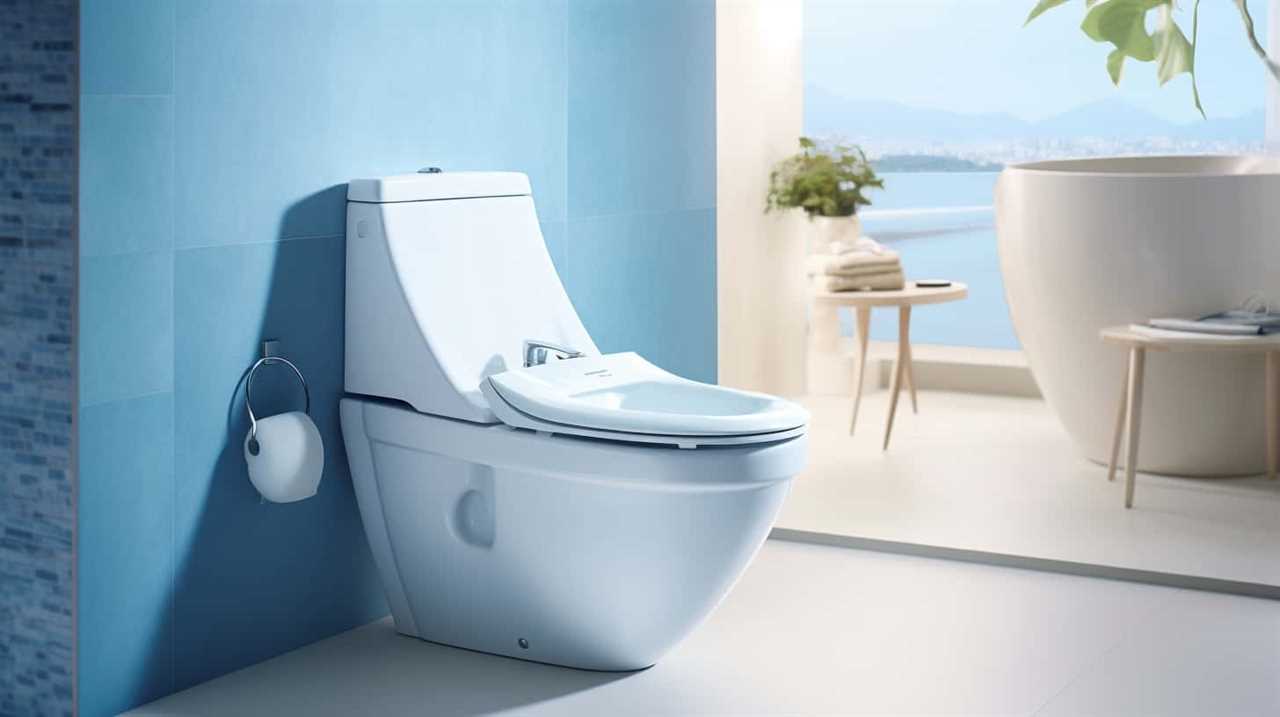
How Does the Flushing Process Work and What Happens to the Water After It’s Flushed?
When we flush the toilet, the water undergoes a complex treatment process that removes impurities and harmful substances. Afterwards, it is released into bodies of water, potentially impacting marine ecosystems.
Are There Any Environmental Concerns Associated With Flushing Items Down the Toilet?
There are significant environmental concerns associated with flushing items down the toilet. It can lead to water contamination and have a detrimental impact on ecosystems. Proper waste disposal is crucial to mitigate these risks.
Can Flushing Certain Items Cause Damage to the Plumbing System?
Flushing improper items can lead to potential plumbing issues and serious consequences. We must understand the impact of our actions, as they can disrupt the delicate balance of the system.
Is It Possible to Retrieve Items That Have Been Accidentally Flushed Down the Toilet?
Retrieving flushed items can be challenging due to toilet clogs. However, it is possible to retrieve certain items using specialized tools. Proper maintenance and caution can prevent clogs and the need for retrieval.
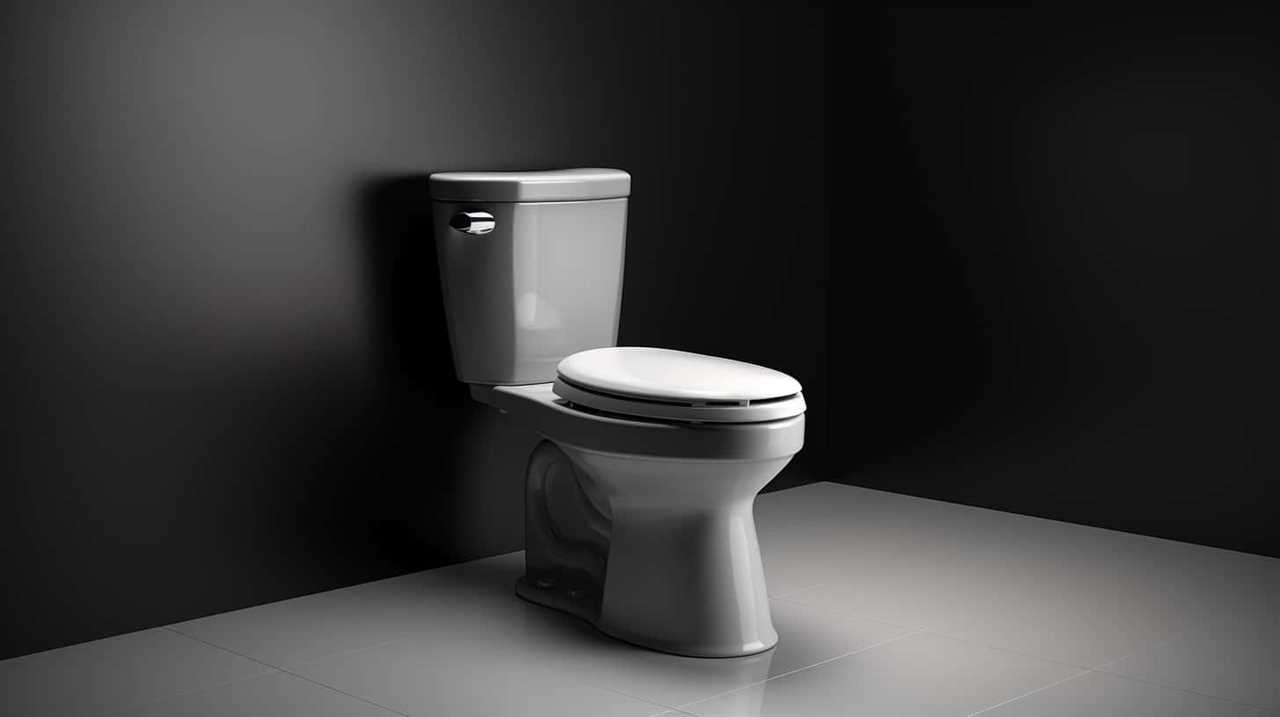
Conclusion
In conclusion, the journey of items flushed down the toilet takes them through the toilet drain, into the sewer system, and ultimately to the wastewater treatment plant.
Here, contaminants and solid waste are removed through various treatment processes. One fascinating example is the case of a lost engagement ring that made its way through the system and was miraculously recovered.
This highlights the importance of proper waste management and the potential for unexpected outcomes in the world of wastewater treatment.
